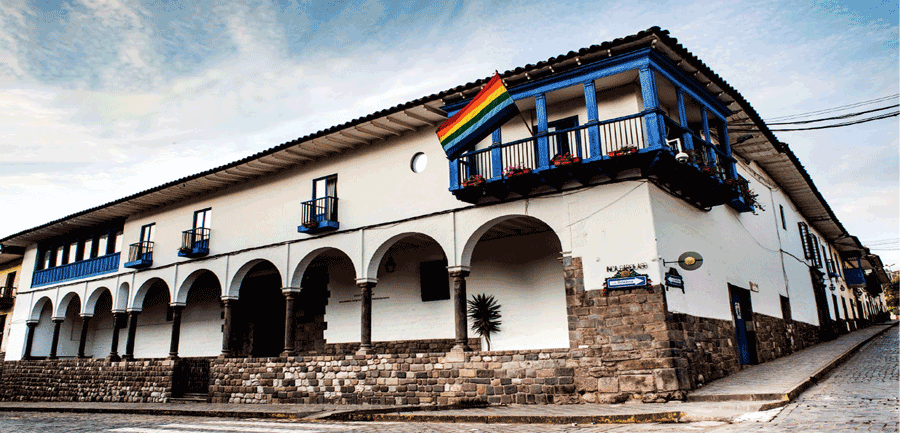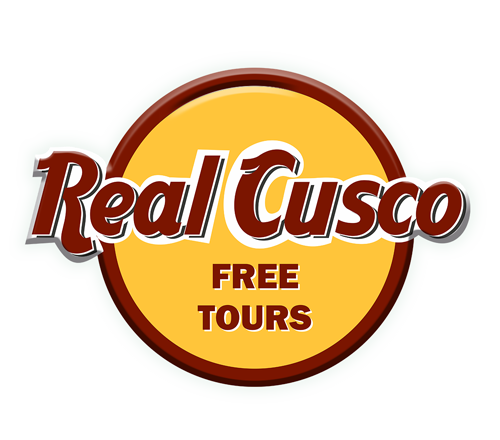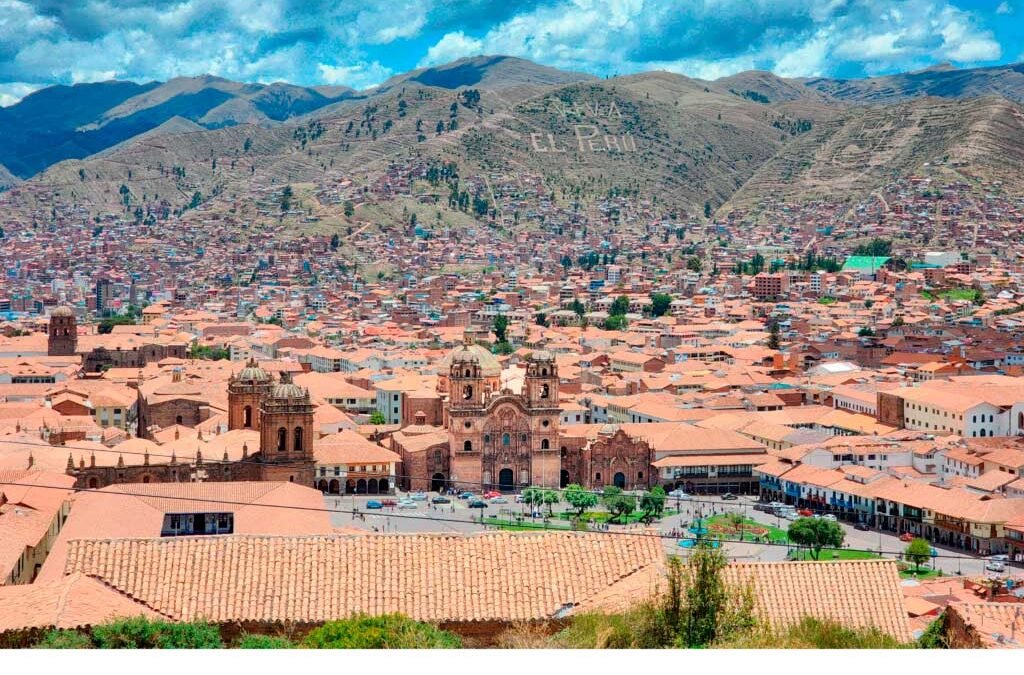In the Historic Center of Cusco we can visit several places of historical and cultural significance, which today remain intact and beautiful.
- Visit the Plaza de Armas in the historic center of Cusco
- Visit the Cathedral of Cusco
- Get to know the Company of Jesus
- Visit the Qoricancha (Temple of the Sun)
- See The 12 Angle Stone
- Visit the San Pedro Market (Central Market)
- Visit the San Blas Market
- go to The Catacombs of the Monastery and Convent of San Francisco
- Get to know the Inca Museum
- get to the traditional neighborhood of San Blas
- get to the traditional neighborhood of San Blas
- Visit the Traditional neighborhood of Santa Ana
- go to the Sapantiana Aqueduct
- Visit 7 Borreguitos Street
- Go to the White Christ
- Visit the Archbishop’s Palace
- Visit the Amaru Cancha (Serpent Temple)
- Go to the Cusco mural
- Visit the Almudena Cemetery
- Get to know the Regional Historical Museum
The city of Cusco or “Qosqo”, a Quechua name that means navel of the world and which in Inca times was the capital of Tawantinsuyo (the Inca territory that included the current countries of Colombia, Ecuador, Peru, Bolivia, Argentina and Chile) is located southeast of Peru in the western mountain range of the Andes, it is located at approximately 3,400 meters above sea level, the most important activity in the city is Tourism, in 1983 Cusco was declared a World Cultural Heritage Site by UNESCO, which is why below We present the 20 best places to visit in the Historic Center of Cusco.
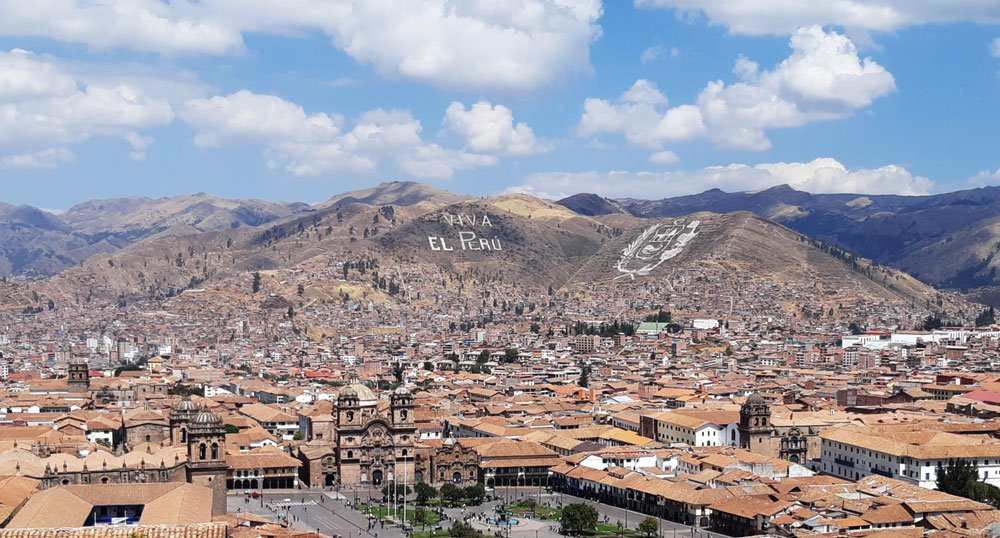
1.- Visit the Plaza de Armas in the Historic Center of Cusco
It is considered the most historic and most beautiful square in Peru, it is surrounded by 2 important churches; the Cathedral and the Company of Jesus, the water fountain has a special attraction since above it is located the statue of the first Inca ruler “Manco Cápac”, in this main square every Sunday the raising of the National pavilion takes place (the ceremony to the Flag of Peru) and the flag of Cusco, and on some occasions civic-military parades are held with the participation of different institutions, both public and private, showing the customs, music and dances of the region. This square is recommended to take your first photos in Cusco and have your first contact with the city.
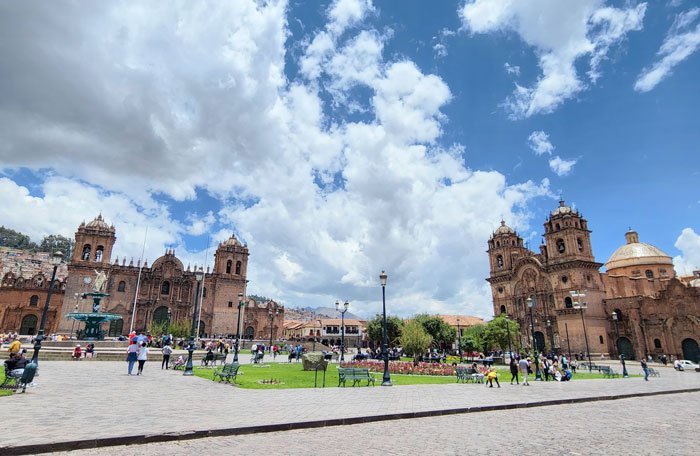
2.- Visit the Cathedral of Cusco
The Basilica of the Cathedral of Cusco is made up of 3 temples or churches, such as the Temple of Triumph, which was built on top of the Suntur Wasi, an important Inca temple, the main nave where the most representative and famous attractions are located, such as the Main Altar, the Choir, The image of the Black Christ (Lord of Tremors) Pictures, Paintings, Images, etc. Among the most famous paintings we find the Andean Last Supper which refers to a typical Andean dish with the baked guinea pig (guinea pig) that is represented in this famous painting that was made by the Cusco artist Marcos Zapata in the XVIII century. The temple of the Sagrada Familia also makes up the Cathedral Basilica with Renaissance Baroque style architecture. If the visitor wants to enter this attraction they have to purchase an entrance ticket, but if they get up early every day from 6 to 8am there is Mass and they could visit for free.
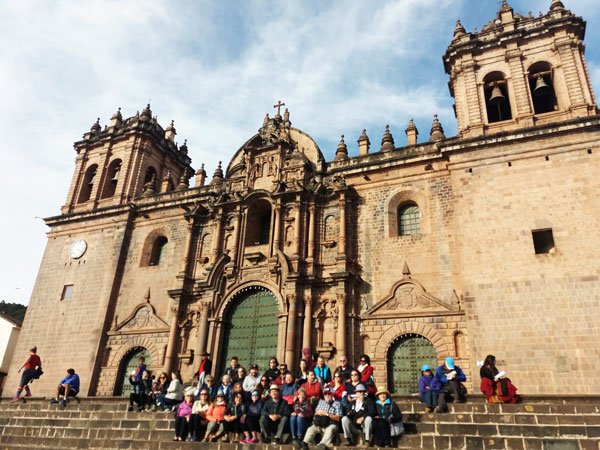
3.- Get to know the Company of Jesus
This church was built by the Jesuit order in Peru, the original construction took place in 1571, but the earthquake of 1650 completely destroyed it, which is why its reconstruction began in 1651, it has many attractions such as the altar made in gold leaf, with a style called Altarpiece that can also be seen on the façade, a Renaissance baroque style is typical of this monument; You can visit it by paying s/. 10 soles, it is worth visiting because it has a second level where you can take the best photos of the Plaza de Amas.
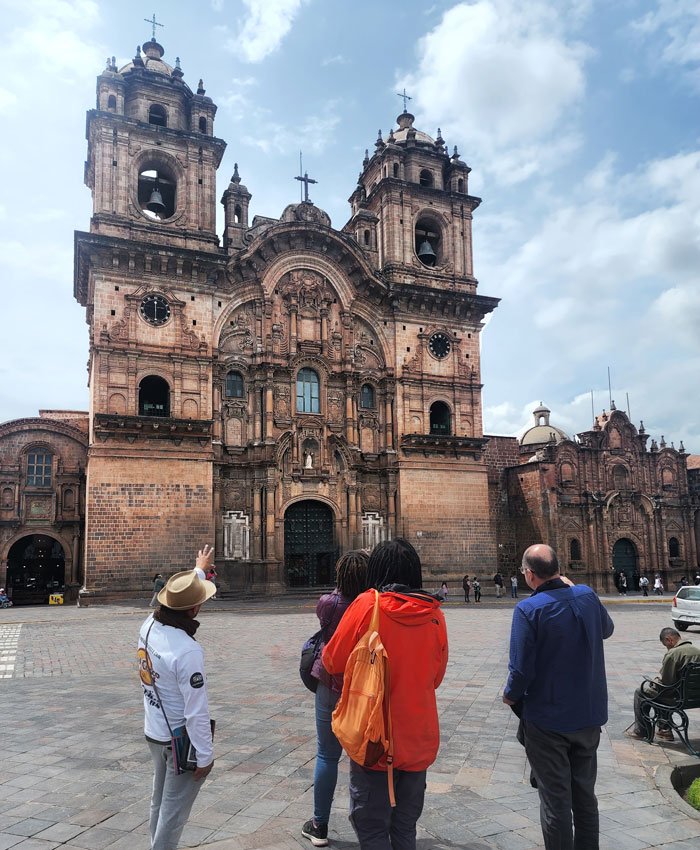
4.- Visit the Qoricancha (Temple of the sun) in the Historical Center of Cusco
It was the most sacred temple for the Incas, it was covered with gold and many precious metals, according to some chroniclers it is said that in its garden you could see life-size statues made of gold, which is why it had that name since ” “qori” means gold and “court” means enclosure. The Dominican order built the convent of Santo Domingo on top of this temple, which can be seen to this day; This temple still maintains the original Inca precincts since its architecture has resisted the passage of time and space, it is a must-see point in the Historic Center of Cusco.
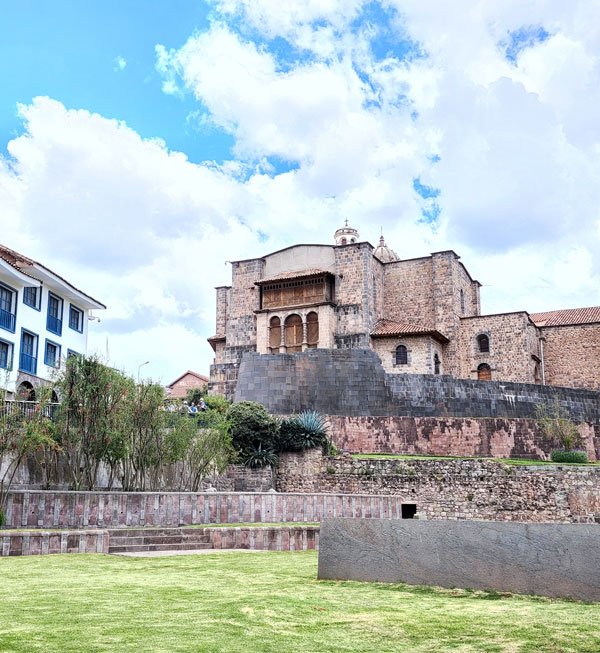
4.-See The 12 Angle Stone
It is the most famous stone in the Historic Center of Cusco, it has 12 finely carved corners and is located on Hatunrumiyoq Street (street of large stones), it is carved from green diorite type stone brought from the quarries of the San Blas neighborhood. 30 meters from this attraction is the 13-angled stone, which is not so well known but is very interesting to know. In fact, on our free walking tours in Cusco we visit it.
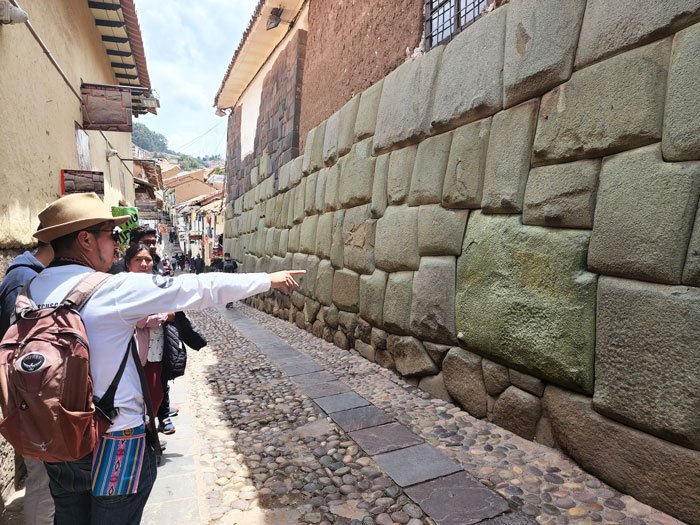
6.- Visit the San Pedro Market (Central Market) in the city of Cusco
It is the best-known market in the city of Cusco, it was designed by the French architect Gustave Eiffel, it is located next to the church of San Pedro, here you can find different local products, you can taste a rich natural fruit juice, diversity of breads, meats, grains, coca leaves, meals, etc. There is also the shamanic sector where you can appreciate the customs in rituals of gratitude to the mountains (Apus) and Pachamama (Mother Earth), you can also have many options in crafts and souvenirs.
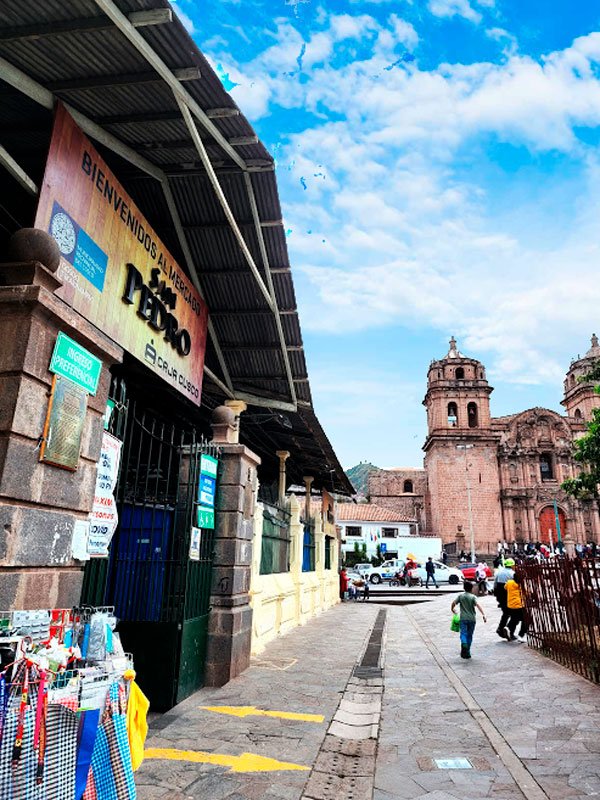
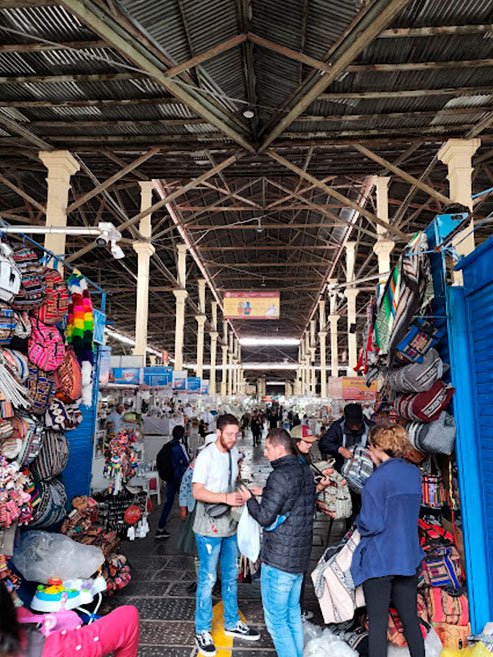
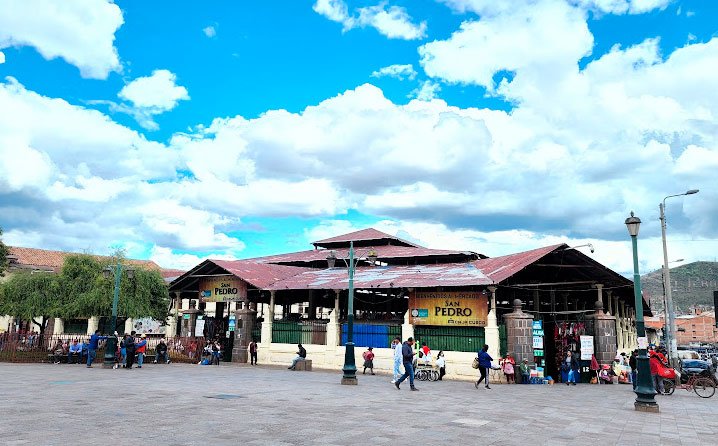
7.- Visit the San Blas Market in the Historic Center of Cusco
It is the market near the main square of the Historic Center of Cusco, in this place you can find the best food options, from vegan, vegetarian, local food, etc. You can also have a wide variety of fruits, natural juices, nuts, local products, etc. With a more cosmopolitan touch.

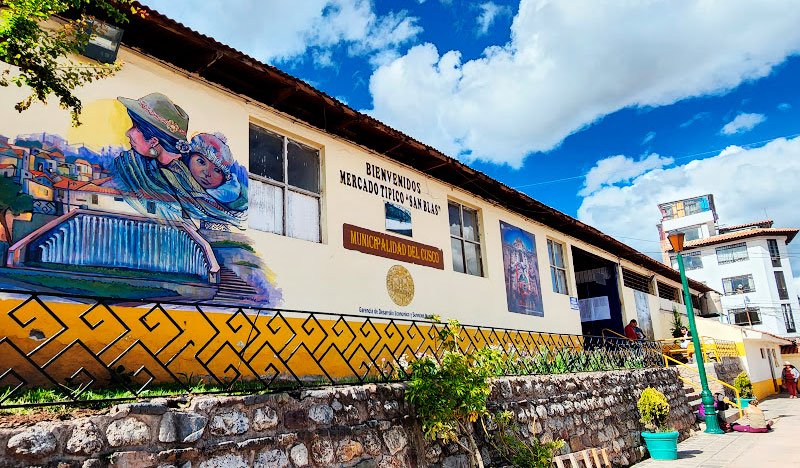
8.-Go to the Catacombs of the Monastery and Convent of San Francisco
The Plaza de San Francisco is famous because there is a botanical garden with species endemic to the region, there is also located the glorious National College of Sciences, famous because the Cienciano team was born there, famous for winning the South American Cup in in 2003 and the South American Cup Winners’ Cup a year later, of course inside the temple of San Francisco are the famous catacombs of Cusco, which is a must-see attraction in the city.
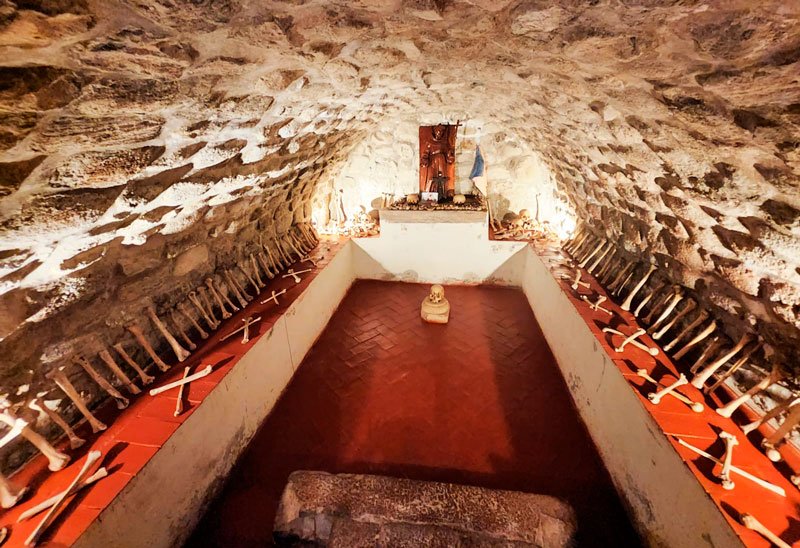
9.-Get to know the Inca Museum in the historic center of Cusco:
It is the most important museum in the city, since it belongs to the national university of San Antonio Abad, the fourth oldest university in America, and therefore it guards treasures of incalculable value for the Andean Culture, it is a complete museum since it shows us the pre-Inca cultures, of course the Inca culture, the colonial and republican era with a detailed explanation with historical data and original pieces.
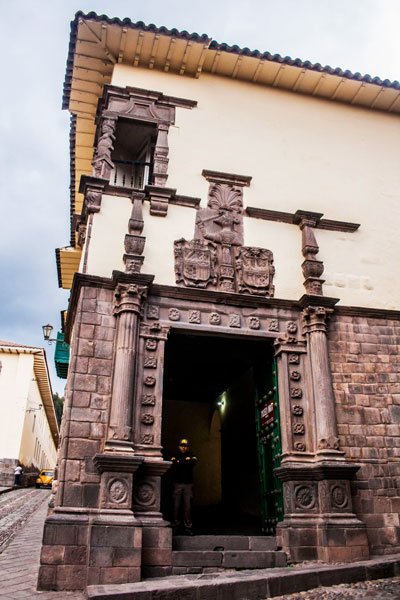
10.-Arrive at the Traditional neighborhood of San Cristóbal in the Historic Center of Cusco
It is one of the most traditional neighborhoods in Cusco, it is characterized because in Inca times the palace of the first Inca ruler (Manco Cápac) was located there. In colonial times this place adopted the name of San Cristóbal since the church of the same name was built on top of the Inca temple (Qolqampata). This attraction is mainly characterized because it is recognized as the neighborhood with the most religious festivities in the city (approximately 10 important religious festivals during the year) and has the best viewpoint during the day.
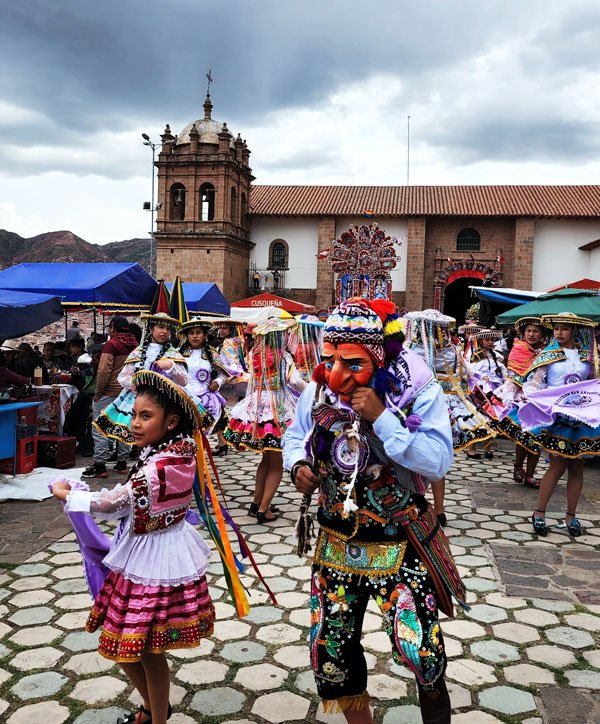
11.- Visit the Traditional neighborhood of San Blas in the Historic Center of Cusco
It is the artisans’ neighborhood, it has a great history and tradition, since here you will find the best wood works that are reflected in its balconies, colonial doors, streets, etc. It is a mandatory visit point, because you will be able to appreciate art in its greatest expression, in the temple of San Blas you will find the famous pulpit of San Blas that consists of a single main piece and more than 2 thousand pieces that adorn this work of art. art, in addition this neighborhood has restobars with the best views of the historic center of Cusco at night and the best artistic and musical shows since this place is considered the most bohemian neighborhood in the city.

12.-Visit the Traditional neighborhood of Santa Ana
It is located in the northwest part of the city, in Inca times it was the control point for entering Qosqo, its original name was Chanapata and later called Qarmenqa, its most important attraction is the Alcabala arch, since in the Colonial times it was a customs control point, it has important streets such as the so-called Calle Conquista where Francisco Pizarro and company entered Cusco in 1533, it also has a viewpoint to see the Apus or tutelary mountains of the city.
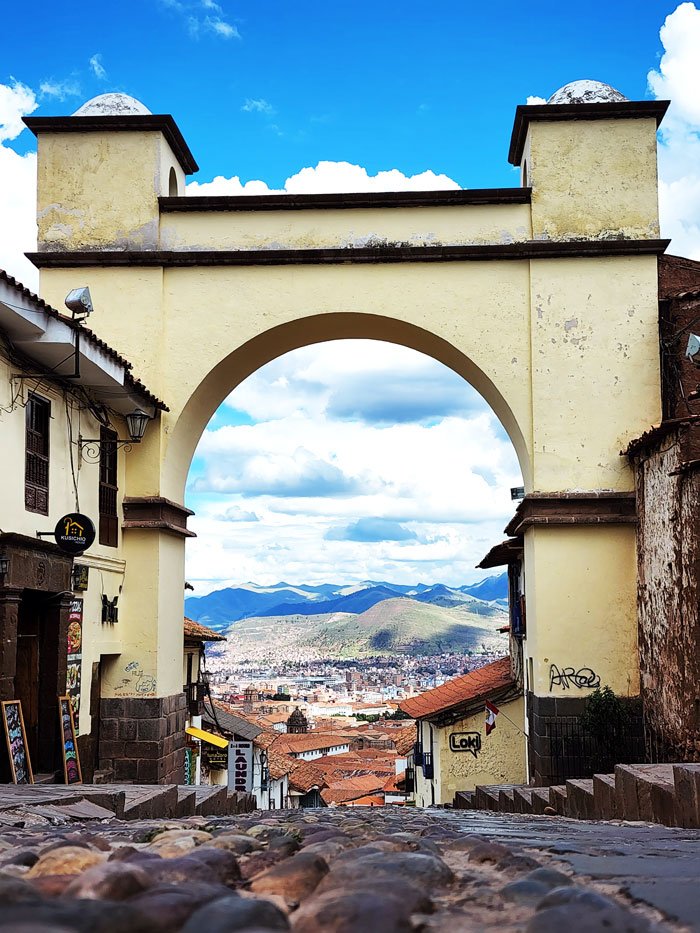
13.-Go to the Sapantiana Aqueduct:
It is an important attraction since it has Roman-style colonial architecture, it was built on top of the P’ujru River to provide water to the colonial city, it has semicircular arches on four levels, nearby is the Waka Sapantiana that He was an Inca oracle and energy center.
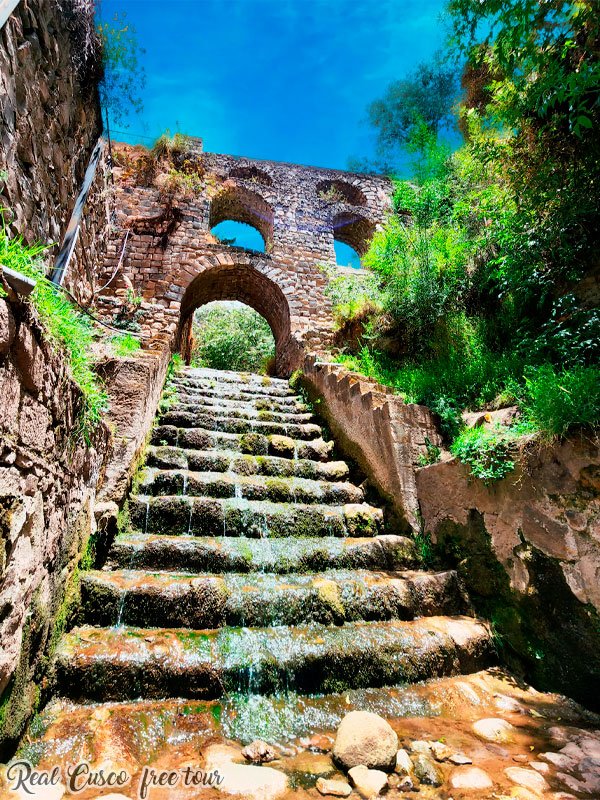
14.-Visit 7 Borreguitos Street:
It is the most famous street in the San Cristóbal neighborhood, it is one of the 7 of 7 in Cusco, in the city there are 7 streets named after 7 things and animals, in the neighborhood these streets are created because the number seven is a sacred number for the West and could protect the city, 7 Borreguitos Street is an important point to take photographs and visit the Waka Sapantiana since it has a decoration and colors that give it a unique appearance, this is also the path to the white Christ .
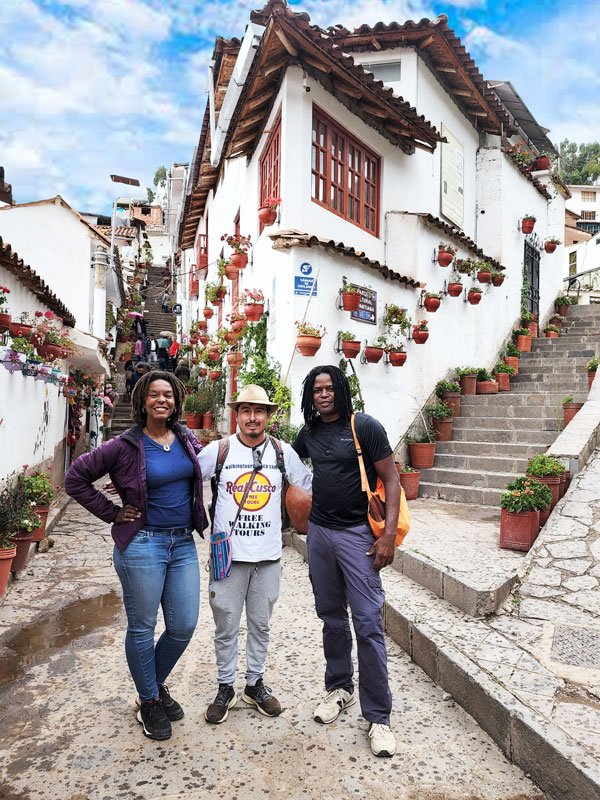
15.- Go to Cristo Blanco:
It is located on top of PukaMoqo hill (which means red hill), this monument was a donation from the Arab-Palestinian community of the city, it was built in 1945, it is 9 meters high and it is the Christ protector of the city, the entrance It is free to visit this place, you just have to take the road that takes you to Sacsayhuamán. You will have the best view of the city and of course the best photographic shots.
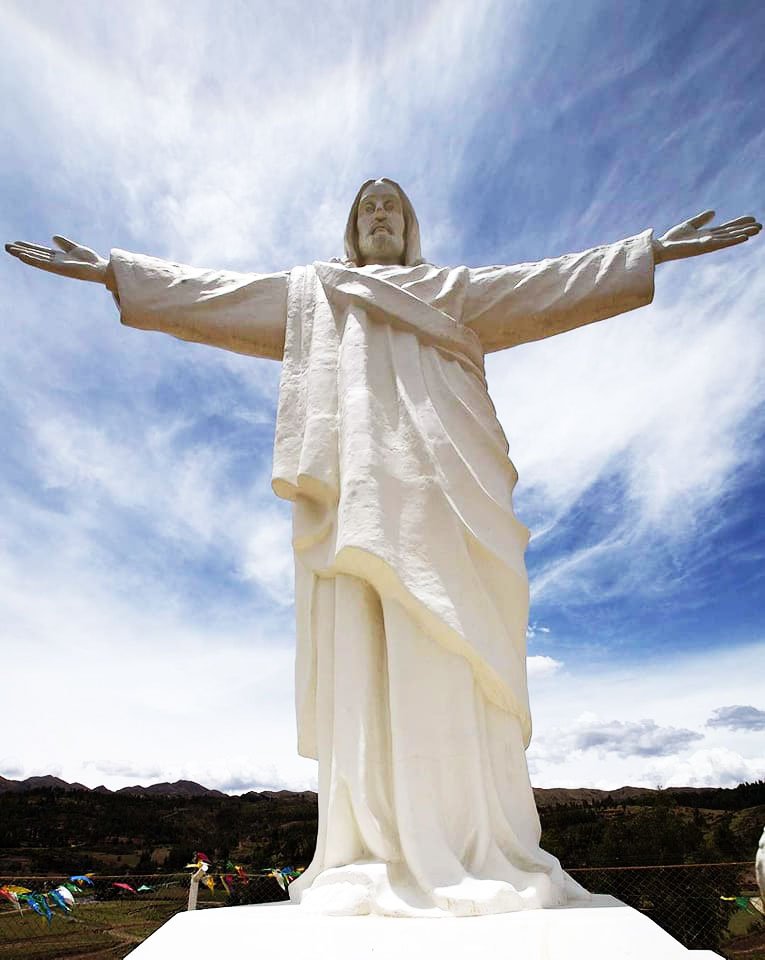
16.- Visit the Archbishop’s Palace
In the Inca era it was the palace of Inca Roca, but later it took on great importance since the first bishop of Cusco Vicente de Valverde lived there, the same one who accompanied Francisco Pizarro on the expedition to conquer Tawantinsuyo. Many characters and characters lived in this place. important families, today it is part of the Archdiocese of Cusco, it has numerous works, canvases, paintings, highlighting the work in the carving of the wood that makes it a mandatory place to visit, in addition, here is the most beautiful balcony in the city .
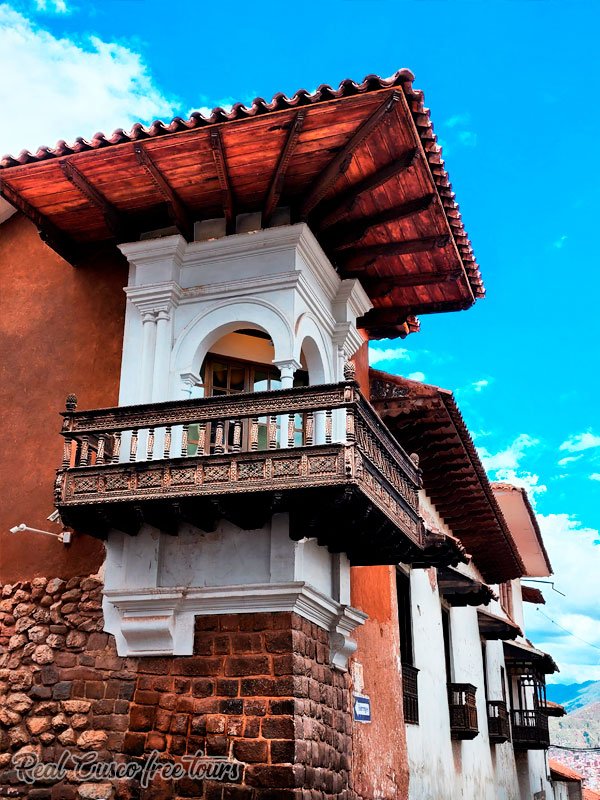
17.- Get to know the Amaru Cancha (Temple of the Serpent):
Se ubica en la plaza de armas, hoy en día encima de este templo esta la Compañía de Jesús, este era el palacio del inca Huayna Capac, parte del templo de la serpiente aún se puede visitar ingresando por la calle Loreto o Inti kijllu, ahí podrás tomarte fotos con llamas y alpacas.

18.- Go to the Cusco mural:
This mural is considered the largest in South America, it was made by the artist Juan Bravo in 1991 by order of the “BEST” mayor this city has ever had, the great Daniel Estrada Pérez, in it you can see all of Peruvian History Andean from the time of the caveman through the Inca era, colony, revolution of Tupac Amaru II and the independence of Peru, it is an attraction that is located on El Sol Avenue, near the Qoricancha or Temple of the Sun.
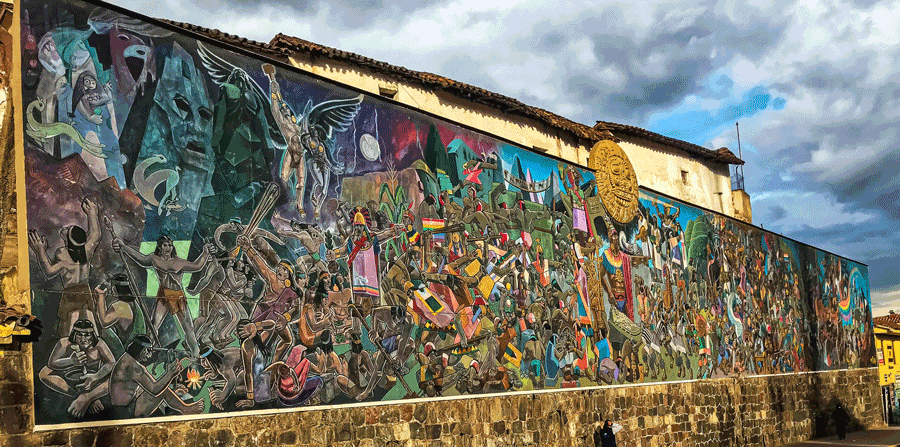
19.- Visit the Almudena Cemetery:
It is the most important cemetery in the city and the oldest, housing numerous niches and marble pieces, gargoyles, mausoleums, etc. It was declared a national heritage site in 2011, illustrious Cusco people are buried here, such as: Uriel García, Clorinda Matto de Turner, Daniel Estrada Pérez, Antonio Lorena, Humberto Vidal Unda among many others, it is located in the district of Santiago.
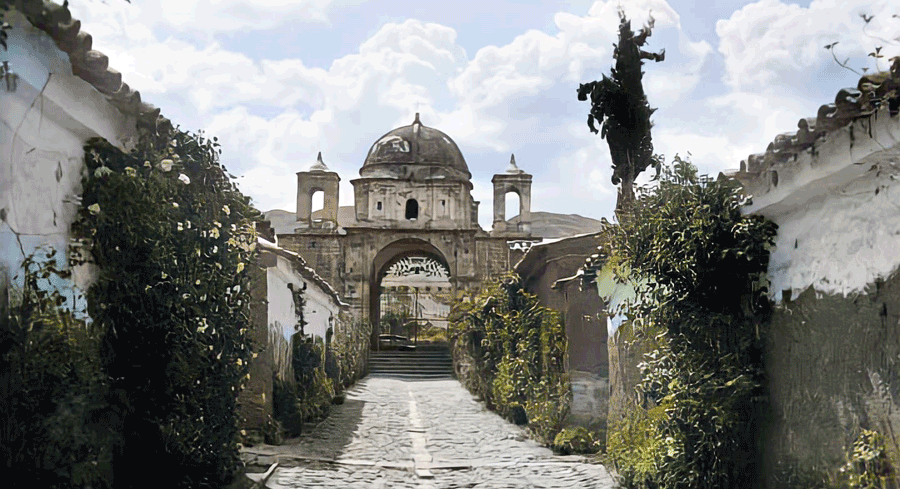
20.- Get to know the Regional Historical Museum:
The great mestizo Peruvian writer Inca Garcilaso de la Vega lived here, in this museum you can learn about the life and work of this illustrious character, we also have pieces from the Pleistocene such as a Glyptodont, the customs and traditions of the Andes are narrated The Inti Intipak (Sol de Echenique) is also kept here, which is the current shield of Cusco, and was returned by the US in 2021 commemorating the bicentennial of the independence of Peru.
